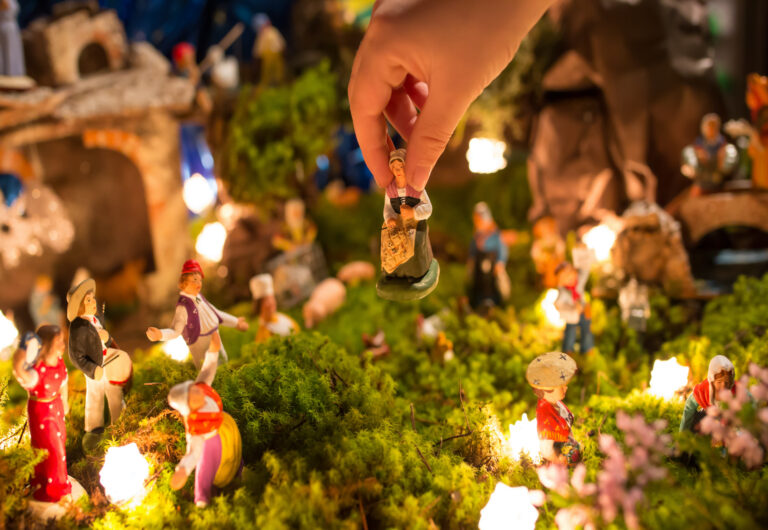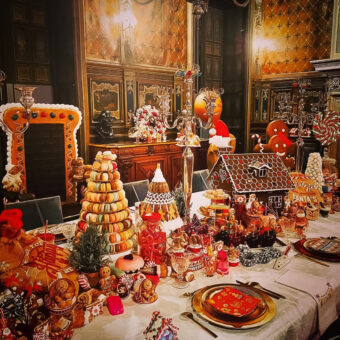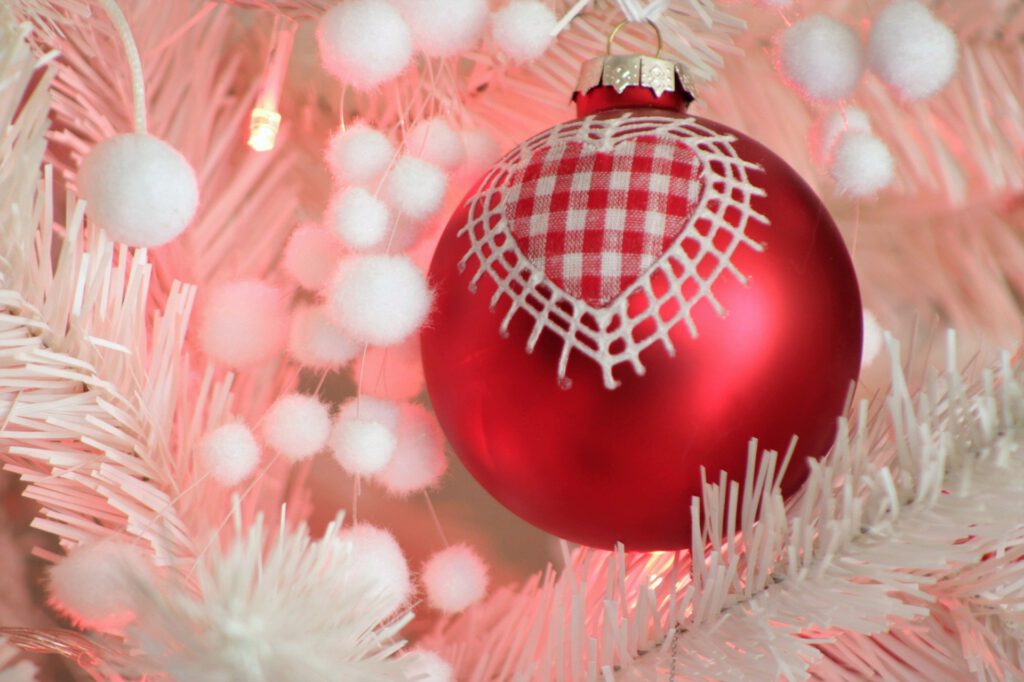Christmas Traditions in France Vs. North America
Festive Similarities & Differences
Every year on both sides of the Atlantic, the dark days of late November give way to festive lights, parades, warm holiday windows, carefully decorated trees, and, on the 24th and 25th of December, tables heaping with abundant treats, from the savory to the sweet. Christmas is celebrated not only as a religious holiday for many, but as a cultural effort to bring light to the darkness, and warmth to the heart. It’s a time for communities and families to come together around special, elaborate rituals, and confront the longest days of the year with a sense of hope, cheer, and festivity.
And while there are many similarities between how Christmas is celebrated in France and the US/North America, there are also some intriguing differences. You may not be able to travel overseas to witness yourself how the French celebrate the festive season– but learning more about how we do things a bit differently over here can stretch your heart and mind– and may even inspire you to create your own French-style Christmas table or dish at home!
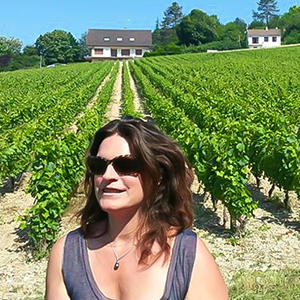
Marie Tesson
Founder
Even if you can’t travel this holiday season, you can stretch your heart to learn about Christmas traditions in France. We may do things differently, but this festive season we’re all together in spirit. Happy Holidays from France!
Pre-Christmas Rituals and Decor
In both France and North America, mid to late November is the moment when cities and towns flip the switches on elaborate, festive holiday displays. Warm strings of lights deck the streets, trees, and buildings such as department stores and town halls in Paris, New York, and most cities on either side of the Atlantic, adding much-needed cheer to the dark evenings.
But while in the US and Canada, pre-Christmas rituals tend to center around children visiting Santa Claus at shopping centres and picking out the perfect Christmas tree for one’s home, in France things are done a bit differently.
Instead of visiting Santa (perhaps as part of a last-minute shopping spree), French children are often taken to admire the elaborate, mechanically animated windows at department stores such as Galeries Lafayette and Printemps– especially elaborate in places like Paris. Children also frequently write letters to Santa Claus (Père Noël in French), as they do in North America.
Discover, Dream, Taste, Learn and be Surprised!
Most beloved of all are France’s large, enchanting Christmas markets, which begin in late November and see warm wooden stalls or chalets take over city and town squares, from Alsace to Paris and the south of France. In addition to being wonderful places to enjoy a steaming mug of spiced vin chaud (mulled wine), perhaps accompanied by a crepe or hot chestnuts, the annual Christmas markets–a tradition whose roots mainly lie in Franco-German Alsace– offer an opportunity to find original, authentic gifts, take in the local scenery, and support local artisans. Games and activities for children are often staged on the margins (ice skating, snowparks, etc).
Many pre-Christmas rituals in France are regionally specific and stretch back to as early as the Middle Ages. In Provence, special processions and rituals such as Christmas mangers (la creche) spring up in cities such as Avignon, Toulon, and Aix, which are painstakingly arranged and decorated with tiny figurines called santons. These are typically handmade with clay.
In places like Lyon, special events such as the Fête des Lumières (Festival of Lights) on December 8th see locals place lit candles in their windows around the city, in tribute to the Virgin Mary; there are also elaborate light displays staged around Lyon by local officials The ritual stretches back to the medieval period, during a time of plague; it was hoped that lighting the candles would help ward off the disease thanks to the protection afforded by “”La Sainte Marie.
Finally, while many French people procure a sapin de Noēl (Christmas tree), they tend to be smaller than those you find inside individual homes in North America– and they’re not as central a ritual in private households as they are in North America. Many people in France admire the enormous Christmas trees that go up every year in department stores or outside of cathedrals, such as Notre-Dame in Paris, without feeling a need to buy a live (or even artificial) tree for the home.
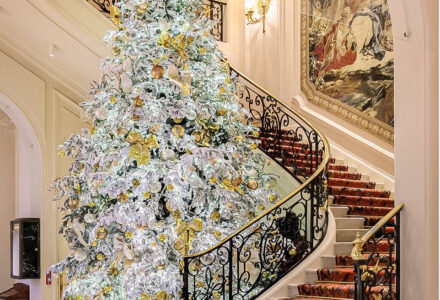
Celebrating on Christmas Eve Vs. Christmas Day
Another major difference between how Christmas tends to be observed in France vs. traditions in North America lies in the timing of the main celebrations.
While in North America, Christmas Eve tends to be a quieter affair, with the main festivities, opening of gifts and large family gatherings on Christmas Day, in France Christmas Eve is often a very special time for family to gather, enjoy a meal (either large or small, depending on local or familial tradition), perhaps attend a midnight mass, and await the magic of Christmas Day. , Attending mass is not only an activity enjoyed by observant Catholics; many people do so simply want to engage in a meditative and peaceful activity.
Le réveillon de Noël, or Christmas Eve, is also a time when children excitedly await le Père Noël — who, as he does in North America — lands on rooftops with his sleigh and reindeer, before entering houses through chimneys and leaving gifts around the tree for the lucky, peacefully sleeping children.
In some households (mostly in the countryside, where fireplaces are still allowed to operate), it’s traditional to light a Christmas log. This is a longstanding tradition that has carried on for centuries, and for those who are lucky enough to have a working fireplace, it remains a cherished one.
In some places in France, the feast of le réveillon de Noël is a partly public ceremony. On Christmas Eve in Provence, locals (often led by town and/or church officials) gather around tables decked with the “13 desserts of Christmas” (see more on this delicious and eye-catching tradition below).
While some families exchange a few gifts on Christmas Eve in France, gifts for children are generally opened on Christmas morning, as they typically are in North America. But while American and Canadian children usually receive Christmas stockings stuffed with treats and games from Santa, in France this is less of a tradition—instead, many of the gifts left under the tree for the children are from the magical workshop of le Père Noël. And of course, adults exchange presents with one another as well.
Many French families enjoy a second, larger feast on Christmas Day, usually a big and festive lunch that is enjoyed in the afternoon.

What’s on The Table: Main Courses
Finally, there are some significant differences in the sorts of typical dishes and festive Christmas treats enjoyed on either side of the Atlantic (with some overlap and shared customs, of course).
While in North America, and especially the US and Canada, Christmas feasts tend to center around plates heaped high with roast turkey or ham, mashed potatoes and gravy, cranberry sauce, stuffing, and candied carrots, in France it’s more traditional to enjoy a Christmas meal in several separate courses, each course paired with wine.
In France, you’d typically start with a more casual aperitif– often a kir royal., which is a glass of champagne topped with an alcoholic fruit syrup called crème au cassis or kir royal. Nibbles generally accompany the drink.
Once everyone takes their places at the formal table, the first course is served. Fresh oysters served with toasted or fresh bread and butter is a common first course, as is foie gras. Some families enjoy both in quick succession.
Next, the main course is a bit more fluid, and can range to roasted lamb served with vegetables, to whole fish, shellfish such as scallops, roasted poultry (most frequently goose, ducklings, guineau fowls, or other “special” varieties), often accompanied by a rich sauce, perhaps with morel mushrooms, or game cooked in a concentrated, red-wine based sauce. Roasted vegetables, especially buttery mashed potatoes, chestnuts and mushrooms, are popular. Fresh bread and wine are always available in abundance.
Before dessert, a cheese course is often enjoyed, featuring a mix of cheese made from cow, sheep, and goat’s milk.
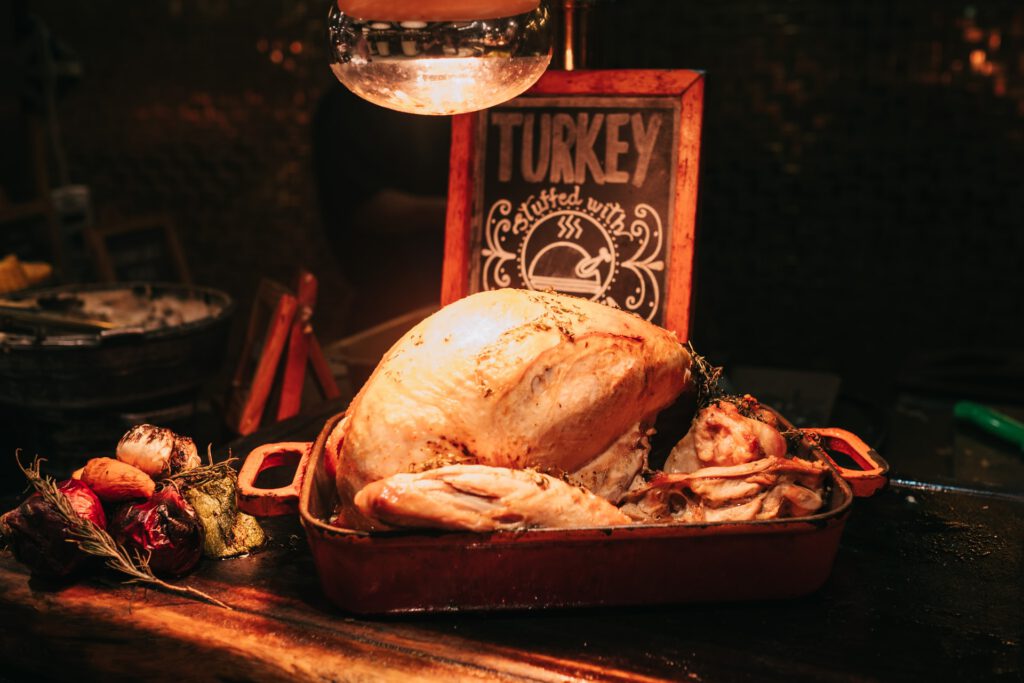
Did you like the content? Share it now!
Christmas Desserts
Finally, no Christmas feast would be complete without one or more desserts to mark the occasion. In the US and Canada, butter-crust pies or crumbles are popular, especially apple, mincemeat, and lemon meringue. Christmas cookies are often consumed throughout the day (or even in the days running up to Christmas).
In France, you’ll typically find other sorts of desserts entirely. The most popular among these is the bûche de Noël (Yule log), which is an elaborately decorated, rolled genoise sponge cake fashioned to resemble a wooden log. Marzipan or sugar mushrooms, real green branches and berries (or ones made with icing) and chestnuts are common decorations.
The bûche, a modern adaptation of the tradition of lighting a real Christmas log to ward off evil spirits before Christmas, is now so popular and widespread in France that you can find it in countless flavors– from simple vanilla or chocolate to rum, lemon, pistachio, and chestnut-passionfruit. It also comes in many creative forms. Some of France’s most talented patissiers compete every year to come up with the most original bûche, many so avant-garde that they no longer resemble logs at all! It can be great fun to explore the shops and bakeries of cities like Paris, Nice, and Strasbourg in search of the perfect, most interesting Christmas log.
In addition to Christmas logs, there are numerous other typical French desserts served for the occasion. In Provence, the aforementioned 13 desserts de Noël are a festive feature in both public and private spaces, and represent Jesus and his 12 apostles. The 13 components vary from city to town in Provence, but are generally made up of the following elements:
- Dried nuts and fruits, which stand for the “four beggars”- these can be almonds, raisins, hazelnuts, prunes, dates etc). These are also said to represent the four religious orders within Catholicism (Franciscan, Carmelite, Dominican and Augustine).
Fresh fruit, generally seasonal varieties such as oranges and mandarins, apples, and pears.- Nougat (both white and dark)
- Fougasse (la pompe): an olive-oil based flatbread traditional to Provence, flavored with sugar and orange blossom in this sweet version for Christmas
- Candied and jellied fruits native to the region, especially pate de coing (candied quince)
- Sweets and small cakes such as calissons (marzipan-based, melon-flavoured sweets native to Aix-en-Provence) or oreillettes (mini waffles)
The 13 desserts are festively arranged on large, white-tablecloth clad banquet tables, and remain left out for around three days after Christmas, or until the 27th of December.
Finally, in places like Alsace, typical Christmas treats take strong German cultural cues. The Kugelhopf (also spelled Kuglopf or Gugelhopf) is a springy yeasted cake laced with currants, raisins or other dried fruit, and flavored with lemon, sometimes rhum, and almonds. Similar to an Italian pannetone, it is especially enjoyed at Christmas. Households in Alsace also traditionally make butter-based cookies known as bredeles. These can come in many forms and flavors, from gingerbread to jam-filled butter cookies.
To conclude, while there are numerous differences between how the end-of-year holidays are feted in France and North America, what brings them together in all cases is the spirit of hope, joy, and warmth.
If you’re interested in embarking on a November or December getaway to France to take a whirl through its magical Christmas markets, experience the 13 desserts of Provence, or see Paris, Normandy, the Loire or Strasbourg lit with twinkling lights and decorations, get in touch with us. We’ll craft the perfect year-end tour for you.
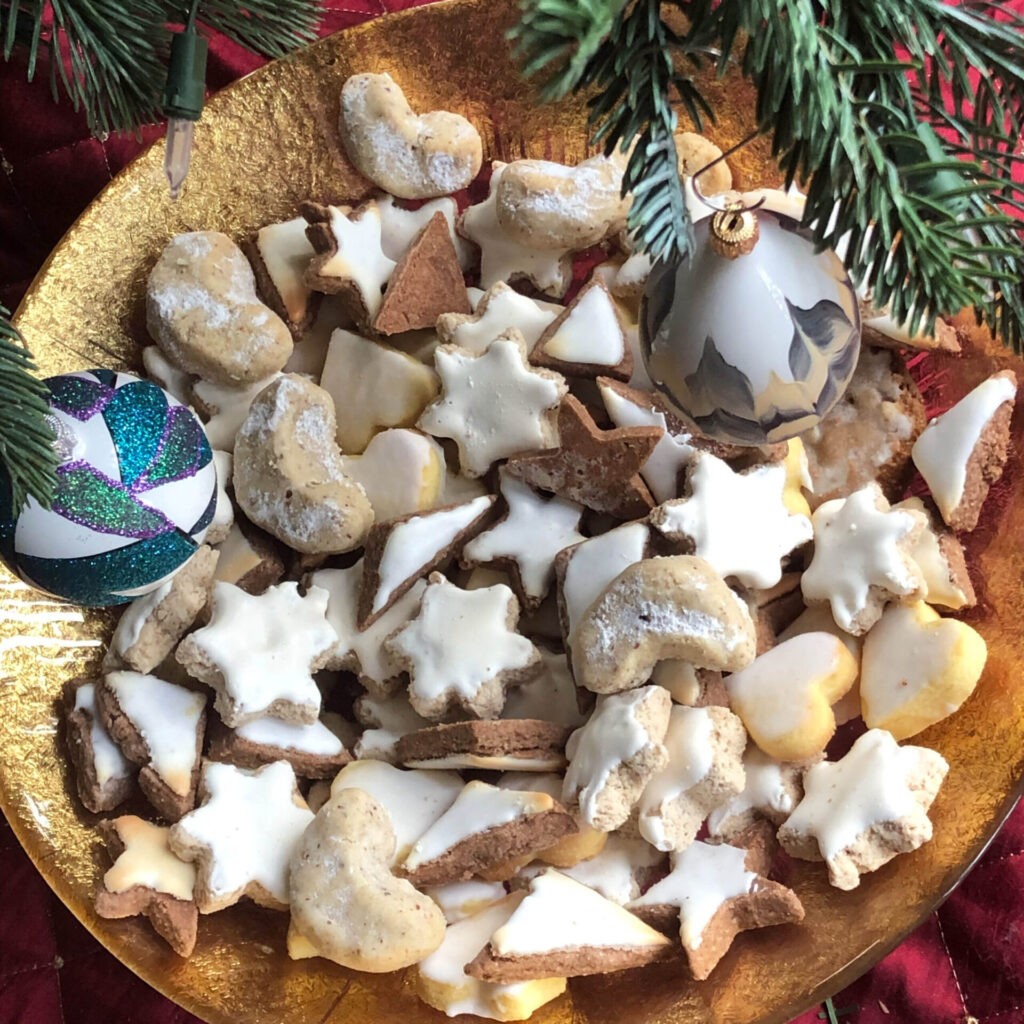
Did you like the content? Share it now!


